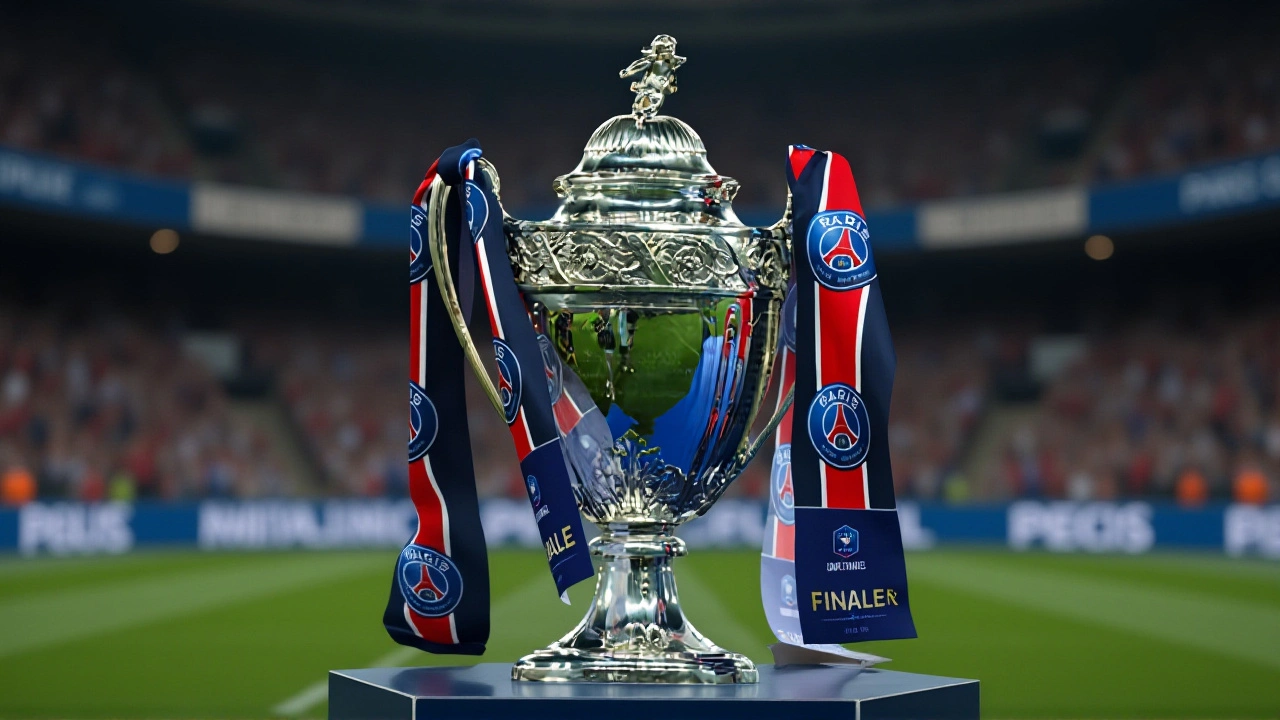
PSG Edge Lens on Penalties to Reach Coupe de France Quarter‑Finals
PSG edged past Lens on penalties in the Coupe de France round of 32, earning a quarter‑final tie against Stade Briochin and keeping their cup hopes alive.
When talking about Coupe de France, the premier French knockout football competition that pits clubs from Ligue 1 down to amateur sides against each other each season. Also known as French Cup, it offers a route to European competition and showcases dramatic upsets. The tournament’s open‑draw format means a tiny town team can face a UEFA‑champion side, creating stories that fans remember for years. Below you’ll find the freshest headlines, from surprise victories to key moments that shape the road to the final.
The elite Ligue 1, France’s top‑flight league where clubs like Paris Saint‑Germain and Olympique Lyonnais battle week in, week out supplies most of the heavy‑weight teams that enter the cup in later rounds. Their professional resources and tactical depth raise the overall level, but the single‑elimination nature still allows lower‑division clubs to pull off shocks. This dynamic creates a constant tension: the stronger side must respect the underdog’s hunger, while the underdog aims to exploit any lapse.
For many French clubs, a deep cup run is more than prestige—it can secure a coveted spot in European competition, especially when league positions fall short. A victory in the final grants a place in the UEFA Europa League, giving clubs a financial boost and a chance to showcase talent on a wider stage. That incentive drives teams to field strong line‑ups even when they’re juggling league fixtures, making every round fiercely contested.
At the heart of the competition are the French football clubs, ranging from storied giants to community side outfits that view the cup as a platform to prove themselves. Smaller clubs often treat a match against a Ligue 1 opponent as a historic occasion, preparing tactics that focus on compact defence and quick counter‑attacks. Meanwhile, the big clubs balance squad rotation with the desire to avoid embarrassing exits, leading to strategic decisions that can define a season.
The cup’s structure is that of a classic knockout tournament, a single‑match elimination format where a loss means immediate exit. This format forces coaches to think in terms of risk versus reward—do you press for an early goal or sit back and wait for a set‑piece? The answer often depends on the opponent’s stature and the venue, as matches can be played at neutral grounds or the smaller team’s home pitch, adding another layer of unpredictability.
Since its inception in 1917, the Coupe de France has produced legendary moments: a 14‑year‑old scorer, a penalty shoot‑out that lasted 20 kicks, and a final that was decided in extra time after a rain‑soaked pitch. These stories underline why the competition remains beloved across the country, transcending the usual league narratives. Fans cherish the chance to see their local heroes share the spotlight with national stars.
In recent weeks the cup has delivered a blend of drama and quality. Upsets in the early rounds have set the tone for a tournament where no result is guaranteed, while the later stages have highlighted tactical evolution as clubs adapt to tighter schedules. Whether you follow the big‑budget sides or root for the underdogs, the Coupe de France offers a mix of excitement, strategy, and pure football passion.
Stay tuned as we break down each match, spotlight standout performers, and examine how the tournament’s outcomes could reshape the French football landscape. Below you’ll discover the latest reports, expert analysis, and all the moments that matter in this season’s Coupe de France journey.

PSG edged past Lens on penalties in the Coupe de France round of 32, earning a quarter‑final tie against Stade Briochin and keeping their cup hopes alive.